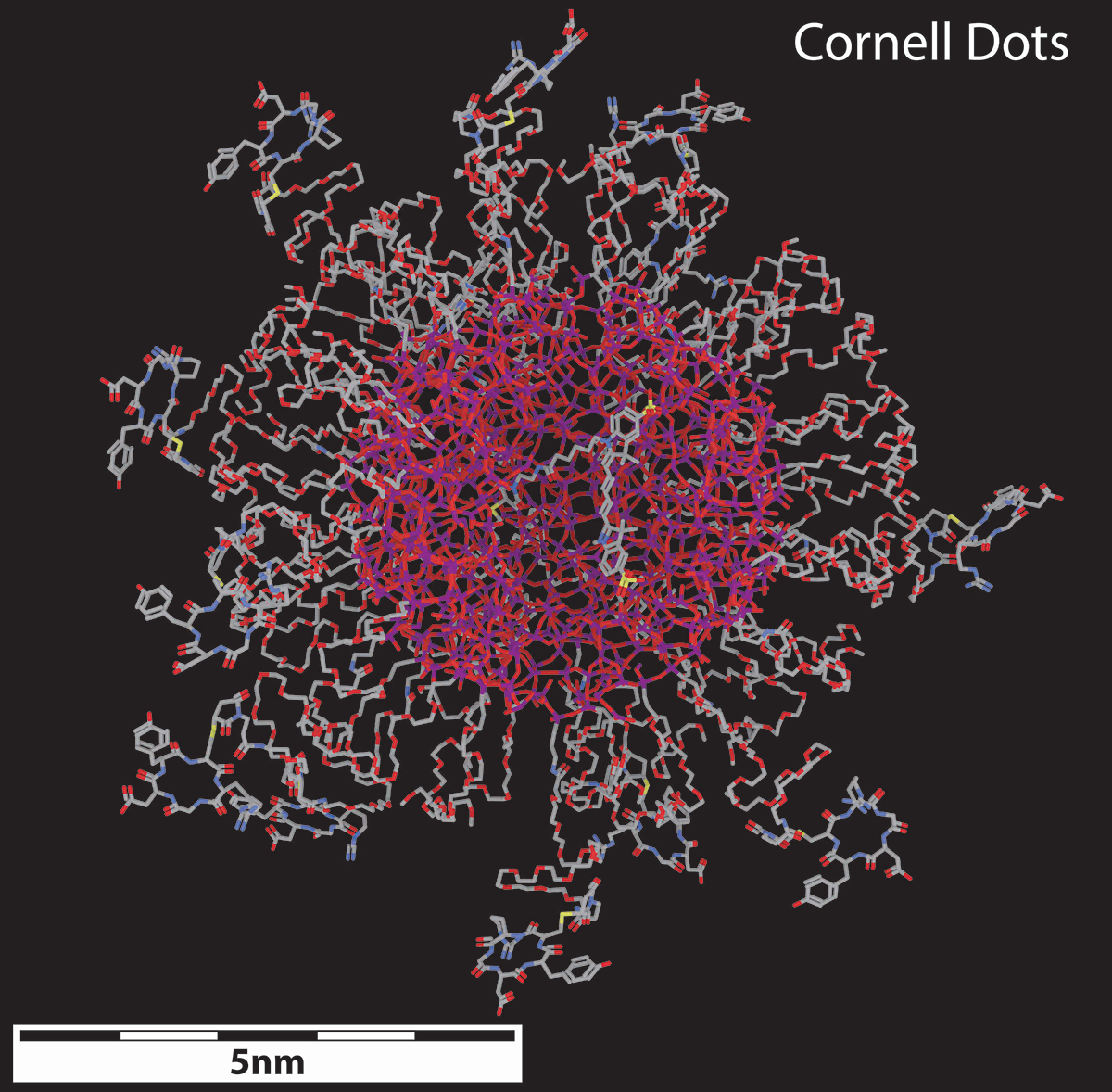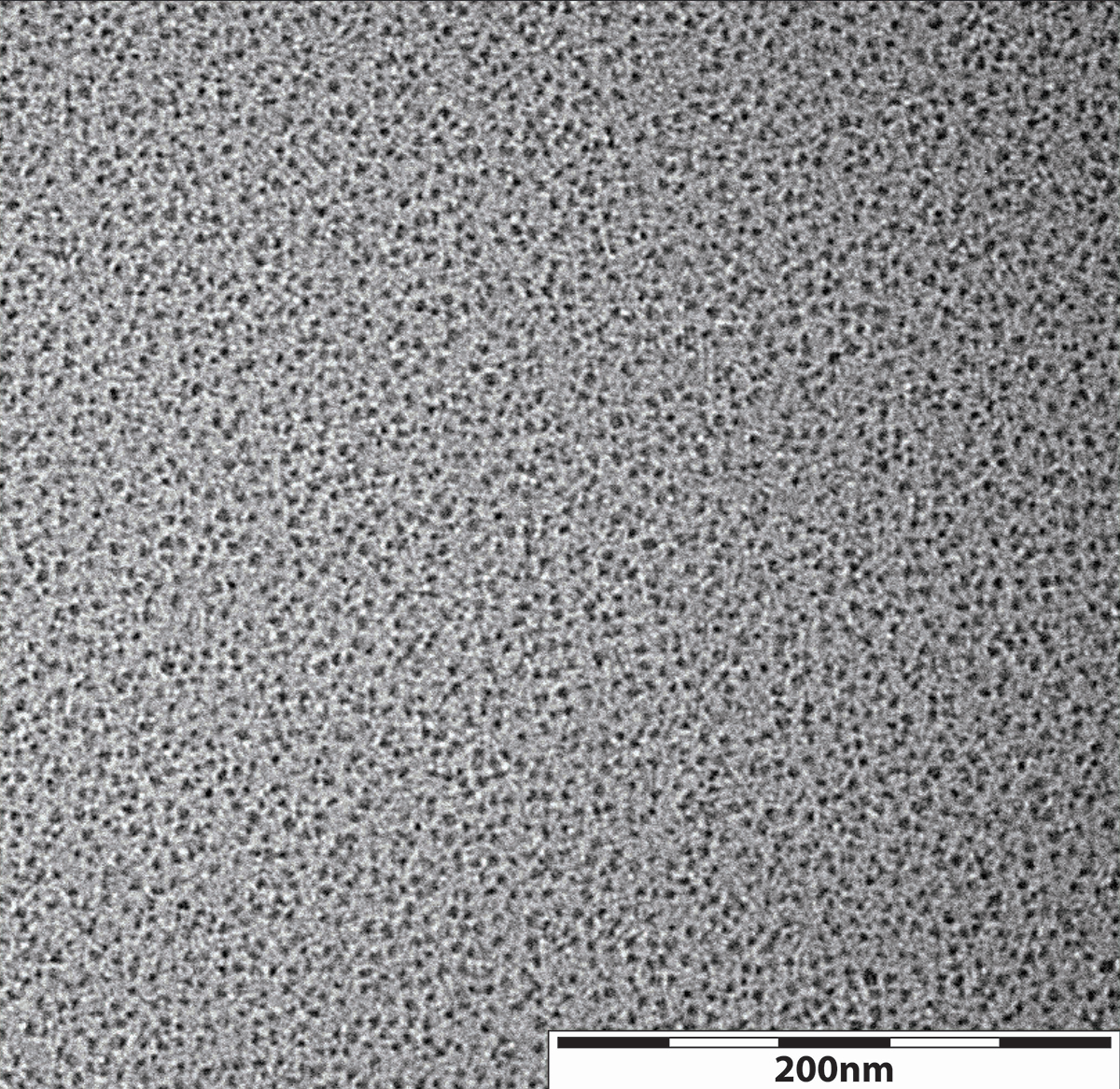Cornell dots research collaboration leads to $10M cancer center


Cornell University, in partnership with Memorial Sloan Kettering Cancer Center (MSKCC), is opening a new $10 million Center of Cancer Nanotechnology Excellence that brings together scientists, engineers, biologists and physicians to develop and translate new cancer care applications based on nanotechnology.
The MSKCC-Cornell Center for Translation of Cancer Nanomedicines is funded with an $8.2 million grant from the National Cancer Institute’s Alliance for Nanotechnology in Cancer and more than $1.9 million from MSKCC. The center – which will have one facility in Duffield Hall on the Ithaca campus and another at MSKCC in New York City – will focus on melanoma (skin) and malignant brain cancers.
The MSKCC-Cornell Center is based on development and translation of Cornell dots, or C dots – silica-organic hybrid nanoparticles smaller than 10 nanometers in size designed to either adhere to and light up cancer cells or quickly leave the body. C dots are being tested in human clinical trials, opening the door to transformative research and development of new clinically promising classes of nanoparticles and their applications in cancer diagnostics, surgery and targeted drug delivery.
Work in the MSKCC-Cornell Center will include development of intraoperative optical detection tools to improve cancer localization, staging and treatment, as well as optimized therapeutic platforms that enhance delivery relative to existing technologies.
“We couldn’t be more proud to have this center supporting the partnership between Cornell and MSKCC,” said Lance Collins, the Joseph Silbert Dean of Engineering. “This moment is the culmination of many years of innovative work by many exceptional researchers at both institutions. Without the foundational success of C dots, we likely would not have been successful with the grant.”
Uli Wiesner, C dot creator and the Spencer T. Olin Professor of Materials Science and Engineering, stresses collaboration as key to the success of the center, which he will co-direct with Dr. Michelle Bradbury, director of intraoperative imaging at MSKCC and associate professor of radiology at Weill Cornell Medical College.
“You can’t do this alone,” Wiesner said. “The medical community doesn’t have enough know-how of nanomaterials, and we, the scientists and engineers, don’t have enough experience in the medical area. But to keep a team together for over 10 years to successfully translate an idea from conception to human clinical trials is not easy.”
Bradbury said: “It is truly remarkable to see how this highly versatile particle platform has evolved to address such a broad range of diagnostic and therapeutic cancer applications – that through the aegis of our Cancer Nanotechnology Center – should ultimately impact patient outcomes and quality of life. My long-standing collaboration with Uli has been essential to making this a reality.”
Wiesner added that the center exemplifies how seed money can blossom. Wiesner and Bradbury were first brought together to work on nanoparticles through a small grant from Weill Cornell’s Clinical and Translational Science Center. Over a decade later, a concept has evolved into a science that warrants its own research center.
“This is a stamp of approval by the research and medical communities that the early risk we took by focusing solely on sub-10 nanometer particles for clinical translation in the field of cancer nanomedicine was the right decision. It is very rewarding to see how after more than 10 years of work on C dots this is now all coming to fruition,” Wiesner said.
The MSKCC-Cornell Center for Translation of Cancer Nanomedicines will focus on four main areas:
Foundational science. Researchers will examine the core science behind C dots and other sub-10 nanometer silica particles, including studying their physical properties and how alterations in particle structure change their biological and toxicological response, as well as their effects on immune response.
Multiplexed optical diagnostic applications in the surgical setting. Researchers hope to create different colored particles that possess distinct optical properties to simultaneously identify during surgery particular tumors and adjacent vital tissues, such as nerves, that may be difficult to visualize.
Particle radiotherapeutics. Researchers have demonstrated how nanoparticles can be used to find tumors, but can they also be used to treat them? Wiesner says they will investigate ways to use radioisotopes that act as strong emitters and can destroy cancer cells.
Assessment of particles in brain tumors for cancer therapy. C dots successfully have detected melanoma metastases during human clinical trials, with clinical trials on brain tumors now ongoing. Wiesner says while early results are promising, biologically driven processes need to be better understood, such as the fate of nanoparticles in tissues and whether they are internalized by tumor cells.
While the MSKCC-Cornell Center for Translation of Cancer Nanomedicines will focus solely on pre-clinical research, it is partnering with two companies, one of which will focus on clinical applications. The yet-to-be-named startup will seek funding to help translate the center’s research into more human clinical trials.
A kickoff meeting is planned for November, and Wiesner hopes to have the MSKCC-Cornell Center up and running by the end of the year.
Media Contact
Get Cornell news delivered right to your inbox.
Subscribe